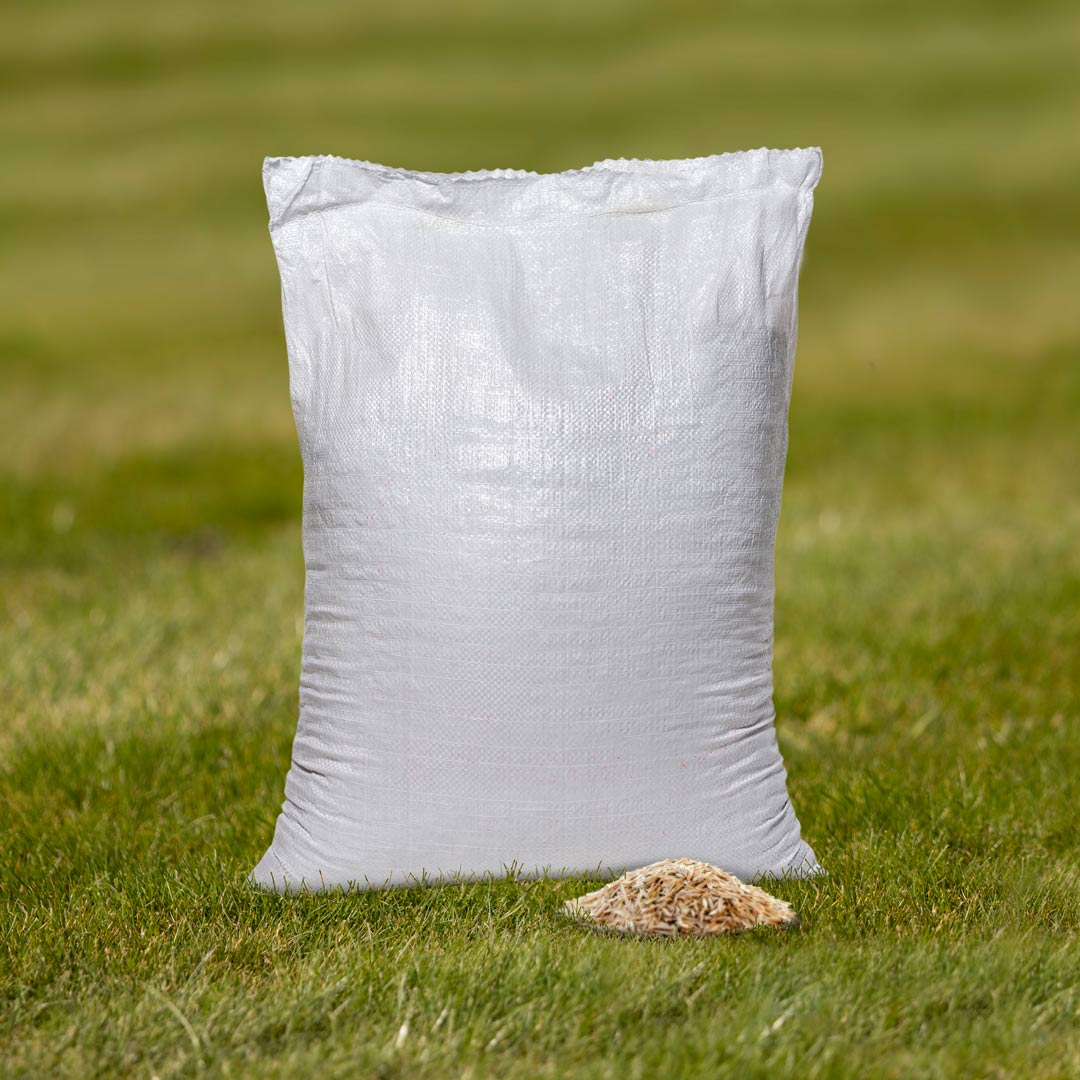
How much grass seed do I need?
Determining the Right Amount of Grass Seed for Your Lawn
Welcome to our comprehensive guide on determining the right amount of grass seed for your lawn. Whether you're a seasoned gardener or a green-fingered novice, knowing how much grass seed to use can be a tricky business.
But don't worry, we've got you covered. In this blog, we'll delve into the factors that influence the amount of grass seed you need, how to calculate your grass seed requirement, and common mistakes to avoid.
We'll also introduce you to the concept of a grass seed calculator and its benefits, and guide you on choosing the ideal seed for your lawn. So, if you're ready to take your lawn from patchy to lush, or if you're planning a new lawn from scratch, stick around.
We're about to demystify the grass seed rate, germination rate, and coverage guide, and suggest how much grass seed you'll need for that perfect lawn. Let's get seeding!
Understanding How Much Grass Seed You Need
Understanding the right amount of grass seed for your lawn can be a daunting task. It's not just about sprinkling some seeds and hoping for the best. It requires careful consideration of various factors such as the type of grass, the size of your lawn, and the seeding rate.
This section will guide you through the process of determining how much grass seed you need. We'll delve into the factors that influence the amount of seed required, how to calculate your grass seed requirement, and common mistakes to avoid. With this knowledge, you'll be well-equipped to create a lush, green lawn that's the envy of your neighbours.
Factors Influencing the Amount of Grass Seed
Grass Variety: Different types of grass have different seeding rates. For instance, a fine fescue may require less seed than a Kentucky bluegrass. It's crucial to know your grass variety to determine the right amount of grass seed.
Lawn Size: The size of your lawn directly impacts how much grass seed you'll need. Larger lawns obviously require more seed. Measure your lawn accurately to avoid under or over-seeding.
These factors are interconnected and should be taken into account when calculating your grass seed requirement.
Calculating the Grass Seed Requirement
Calculating the grass seed requirement for your lawn is a crucial step in achieving a lush, green carpet of grass. This process involves taking into account the size of your lawn, the type of grass you intend to plant, and the seeding rate recommended for that particular grass variety.
The seeding rate varies depending on whether you're starting a new lawn or overseeding an existing one. For instance, a high-traffic area might require a higher seed rate compared to a low-traffic area. By accurately calculating your grass seed requirement, you can avoid the risk of sparse growth due to insufficient seeding or the unnecessary expense of purchasing excess seed.
Common Mistakes to Avoid
When it comes to determining the right amount of grass seed for your lawn, there are a few common mistakes that you should avoid.
Overseeding: Many homeowners tend to use too much seed, especially when dealing with minor repairs. This can result in dense tufts of grass that don't blend well with the rest of the lawn.
Ignoring the seeding rate: Each type of grass has a recommended seeding rate. Ignoring this and just scattering the seeds can lead to uneven growth and poor establishment of the lawn.
Not considering the conditions: The conditions in which you are seeding, such as the weather and soil quality, can greatly affect the germination rate. If you're seeding in less than ideal conditions, you may need to increase the seed rate.
By avoiding these mistakes, you can ensure that you're using the right amount of grass seed for your lawn. Remember, a little knowledge about seed rates goes a long way toward nurturing the green paradise you’ve always envisioned.
Using a Grass Seed Calculator
Navigating the world of lawn care can be a daunting task, especially when it comes to determining the right amount of grass seed for your lawn. This is where a Grass Seed Calculator comes into play. This innovative tool is designed to simplify the process, taking into account your lawn's specific measurements and the type of grass you're planning to sow.
The Grass Seed Calculator is a game-changer for both novice gardeners and seasoned lawn care enthusiasts. It eliminates the guesswork, ensuring you have the right seed rate for optimal lawn growth. Whether you're starting a new lawn or overseeding an existing one, this tool is your go-to guide for efficient and effective lawn care.
How a Grass Seed Calculator Works
A grass seed calculator is a handy tool that helps you determine the right amount of grass seed for your lawn. It works by taking into account various factors such as the type of grass, the seeding rate, and the size of your lawn.
The calculator uses a coverage guide to suggest how much grass seed you'll need per square foot. This guide is based on the germination rate of the grass variety you've chosen.
The beauty of a grass seed calculator is that it does all the hard work for you. All you need to do is input your lawn's details and it will provide you with the ideal seed rate. This way, you can ensure you're not under or over-seeding your new lawn.
Benefits of Using a Grass Seed Calculator
Efficiency: A grass seed calculator eliminates guesswork, ensuring you purchase the right amount of seed for your lawn. This not only saves time but also prevents wastage of resources.
Precision: The calculator takes into account the specific dimensions of your lawn, be it rectangular, circular, or irregularly shaped. This precision leads to a more lush and finished lawn.
Convenience: Modern calculators store your lawn’s measurements, making it easy to compare the cost-effectiveness of various seed options. This feature is especially beneficial when dealing with different types of grass, each requiring a unique seeding rate.
Savings: By suggesting how much grass seed to buy, the calculator helps you avoid overspending on unnecessary seed. This is particularly useful when planning a new lawn or overseeding an existing one.
Flexibility: The calculator adjusts for different grass varieties and their ideal seed rates, ensuring optimal germination and coverage. This flexibility allows you to experiment with different grass types for your lawn.
Choosing the Right Type of Grass Seed
Choosing the right type of grass seed is a pivotal step in your journey to a lush, green lawn. The type of seed you select can significantly influence the overall look, feel, and durability of your lawn. It's not just about how much grass seed you use, but also about the quality and suitability of the seed to your specific lawn conditions.
Different grass varieties have unique characteristics and growth habits. Understanding these can help you make an informed decision, ensuring your lawn thrives and remains healthy. Whether you're starting a new lawn or overseeding an existing one, the right grass seed can make all the difference.
Different Types of Grass Seeds
Kentucky Bluegrass: This grass seed is a popular choice for lawns due to its high germination rate and ability to withstand varying weather conditions. It's ideal for those looking for a lush, green lawn.
Perennial Ryegrass: Known for its quick germination rate, this type of grass seed is perfect for those who want to see results fast. It's also resistant to wear and tear, making it a great choice for high-traffic areas.
Fine Fescue: This grass variety is perfect for areas with shade as it doesn't require much sunlight to thrive. It's also low maintenance, making it a favourite among homeowners.
Tall Fescue: This grass seed is known for its ability to withstand drought and heat, making it an ideal seed for areas with harsh weather conditions. It's also a great choice for those looking for a low-maintenance lawn.
Bermuda Grass: This grass seed is a great choice for those living in warmer climates. It's resistant to heat and drought, and it's also known for its dense growth, which can help prevent weed growth.
Selecting the Ideal Seed for Your Lawn
Choosing the right type of grass seed for your lawn is a crucial step in achieving a lush, green lawn. The ideal seed for your lawn depends on several factors. These include the climate of your area, the amount of sunlight your lawn receives, and the type of soil in your garden.
The right amount of grass seed can vary depending on the grass variety. Always refer to the grass seed rate or coverage guide provided by the seed manufacturer. They usually suggest how much grass seed per square metre is needed for new seed or for overseeding an existing lawn.
Final Thoughts on Grass Seed Calculation
In conclusion, determining the right amount of grass seed for your lawn is a crucial step in achieving a lush, green garden. It's not just about the quantity, but also the type of grass seed you choose.
Remember, each grass variety has a different seeding rate, so take into account the coverage guide provided by the seed manufacturer.
Using a grass seed calculator can simplify the process, helping you avoid common mistakes and ensuring you get the right seed rate per square metre. It's a handy tool that can suggest how much grass seed you need based on your lawn's size and the germination rate of your chosen seed.
Finally, whether you're seeding a new lawn or overseeding an existing one, understanding how much grass seed you need is essential.
With the right amount of seed and a little patience, you'll soon have a lawn that's the envy of your neighbours.
Ready to be proud of your garden?
Ensure your lawn never goes hungry with our personalised feeding plan. Delivered through you letterbox exactly when you need it.





